Can you join us for lunch today? In our local Balinese cooking class, we gathered wild foods and prepared them for lunch. I made a video of the adventure!
Here at Keramas Sacred River Village Lama D and I are immersed in nature. Every tree, flower, plant, and animal has its special place in the balance. The frangipani flower blesses, many roots offer pungent spices, the leaves and fruits are waiting to be enjoyed, the tall coconut trees provide everything. The knowledgable staff here offers a cooking class for visitors in local Balinese foods. Secretly wanting to taste authentic foods, I immediately offered to make a video. Click below to watch it!
The cooking classes are available in every dietary persuasion, vegan, vegetarian, Sattvic, Paleo, you name it. When you come to Bali, you can design your own menu. The only requirement is that you have to help gather it from their farm and jungle. Then you will prepare and eat it. Having already tasted their restaurant’s delicious food. I knew the risk was minimal, so I eagerly volunteered.
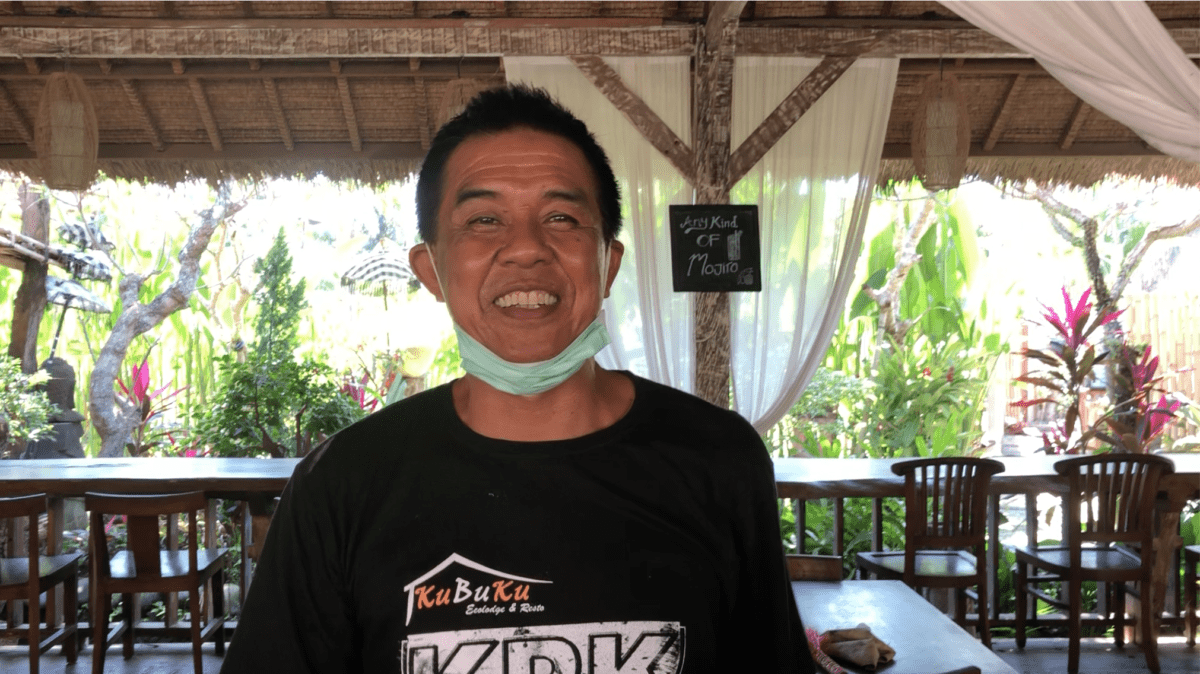
This is Ketut Siarta, our highly experienced teacher of Bali sacred traditions. He showed us how to prepare each food, using color in harmony with Bali’s ancient four directions.
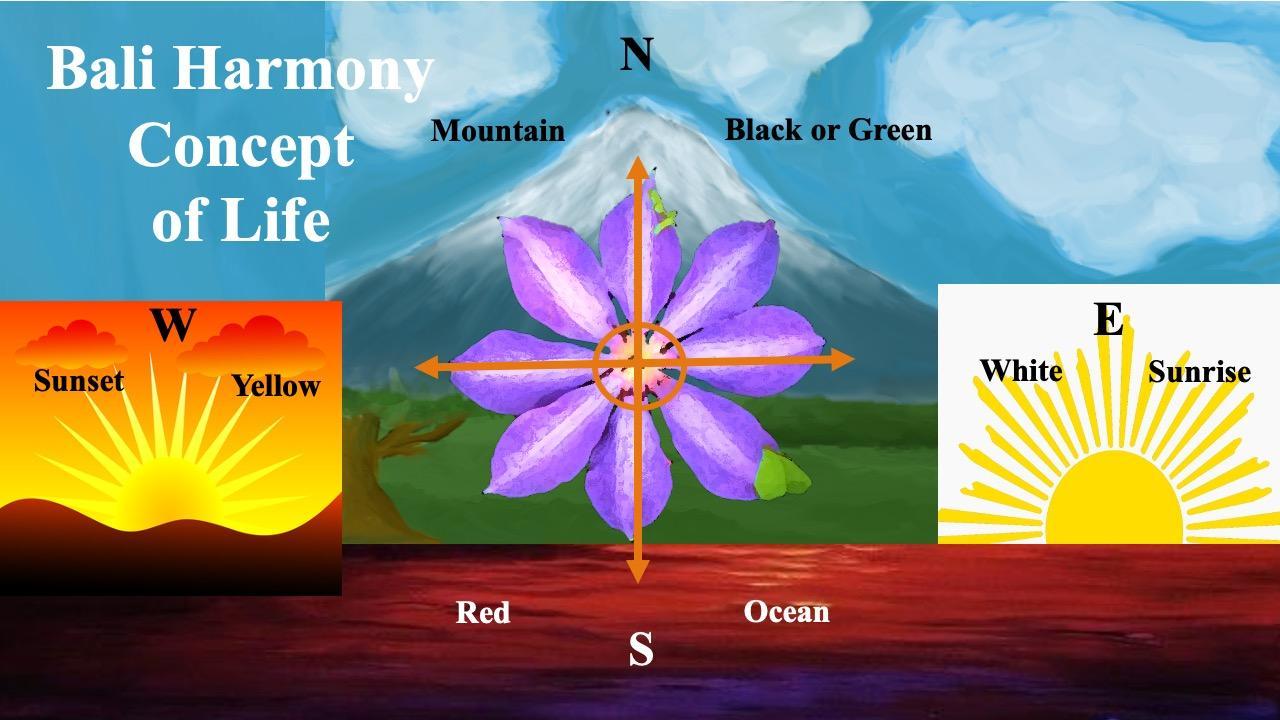
The Bali map of harmony shows the four directions:
- North is the mountain, which is black or green, symbolizing fertility.
- South is the ocean, which is always warm, active, full of life, fire, red color.
- East is the Sunrise, white color, birth and beginnings.
- West is the Golden Sunset, prosperity, and endings.
The Four Directions
Since ancient times in Bali, two powerful aspects of nature are the mountain and ocean. As the two cardinal points in North and South they form a vertical line called the Water Line. This vertical line connects Water and Mountain, symbolizing respect between human and nature spirits of the environment. The top half of the line that moves up from the center connects humans to God. The lower half of the line connects humans to water, fire, and the ocean.
The horizontal line from East to West is called the Sun Line or the Life Line. A person is born in the East, travels up the mountain of life, and eventually comes down the mountain in the West, which represents yellow prosperity, sunset, and death. The East half of the horizontal line represents harmony with the nuclear family. The West half of the line symbolizes harmony with neighbors and the larger community.
The central circle represents the circle of life of humanity, ever eternal, which connects the vertical and horizontal lines. It means we live in perfect balance between God, nature, family and neighbors.
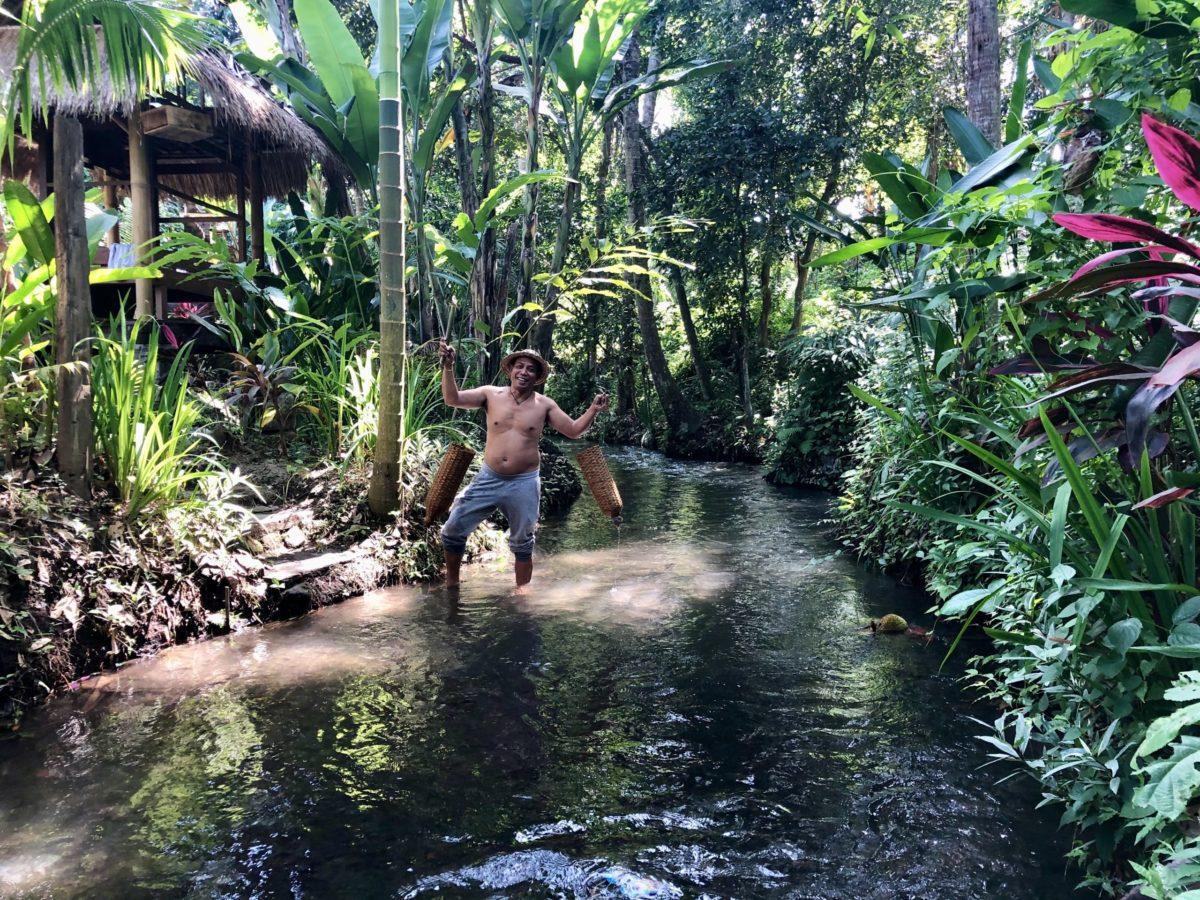
Ketut Arjana is the owner, heart and soul of Keramas Sacred River Village. He started the day before our class, to lay basket fish traps in the clear stream that flows from the mountains through the estate.
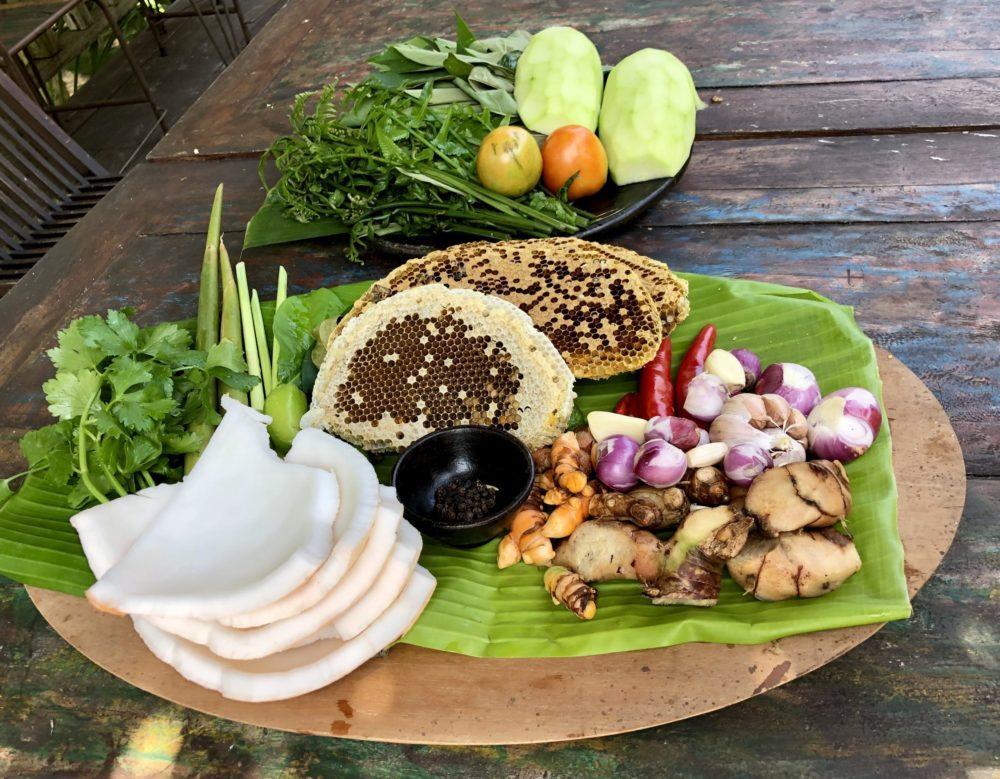
These are some of the ingredients we gathered for lunch, arranged in the four cardinal directions. We collected all these items. Lower plate top clockwise: baby bees, chilis, garlic, onions, galangal, white turmeric, yellow turmeric, ginger, black pepper, coconut meat, parsley, fern, lemon grass. Upper plate: Cassava leaves, green papaya, tomato, fern, and bay leaf.Step by Step video of our lunch from nature.
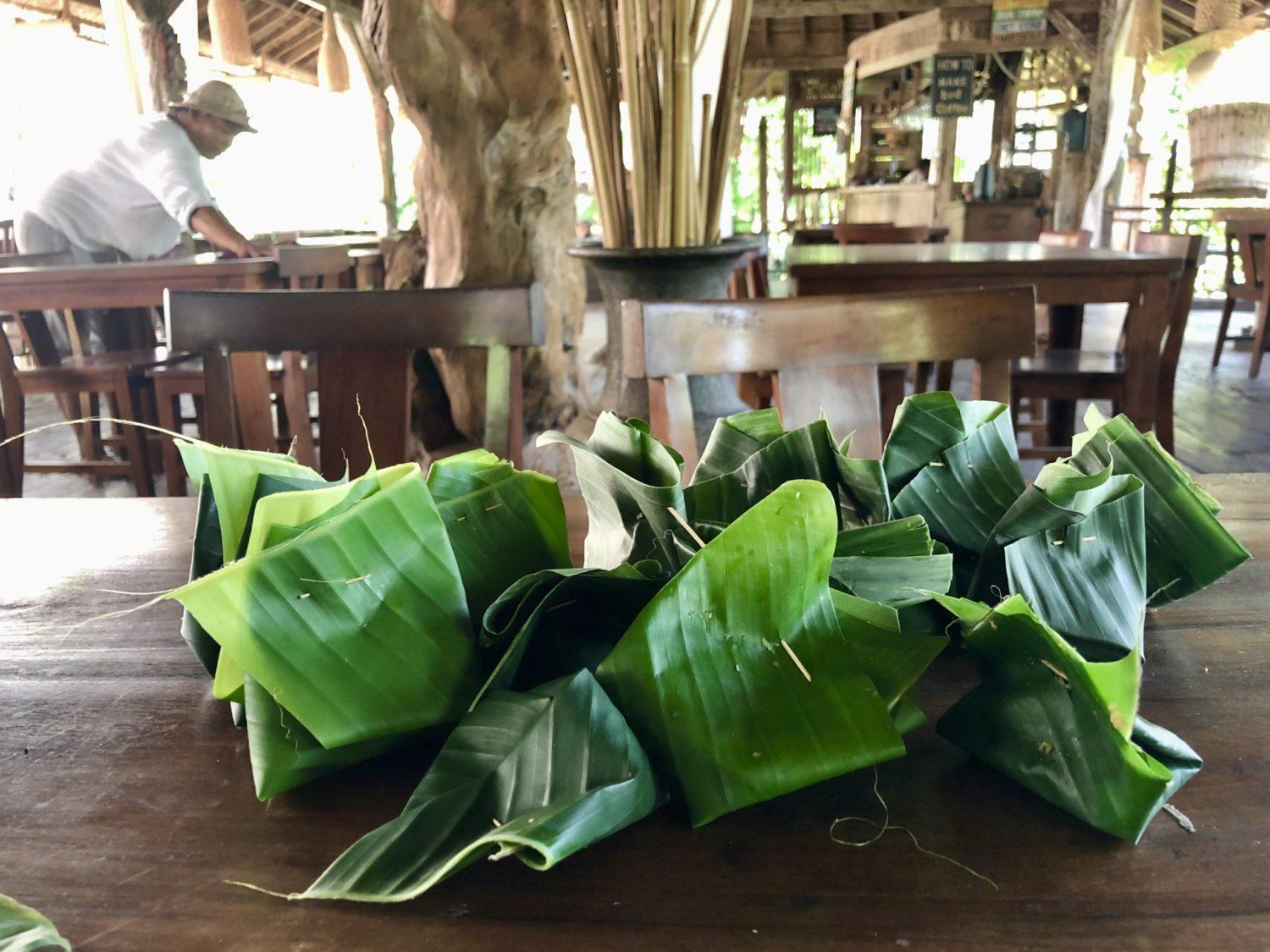
After wrapping the food in banana leaf, Ketut Arjana prepares the table for lunch.
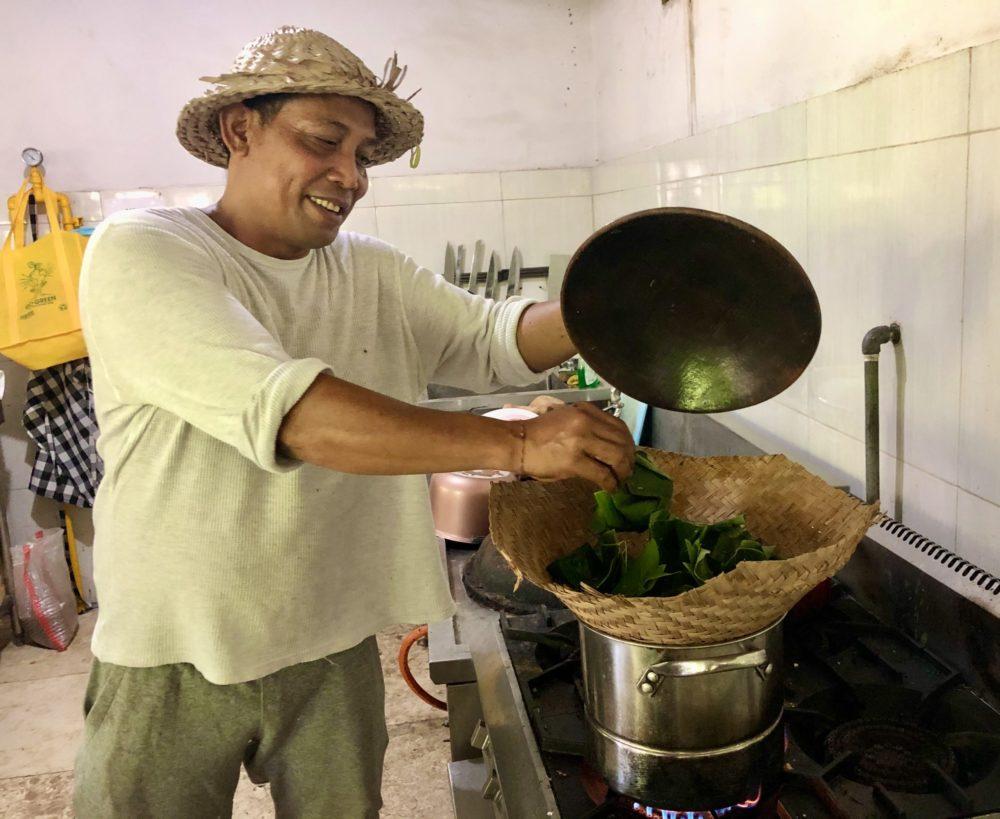 The banana leaf wraps steam in a basket! Getting hungry!
The banana leaf wraps steam in a basket! Getting hungry!
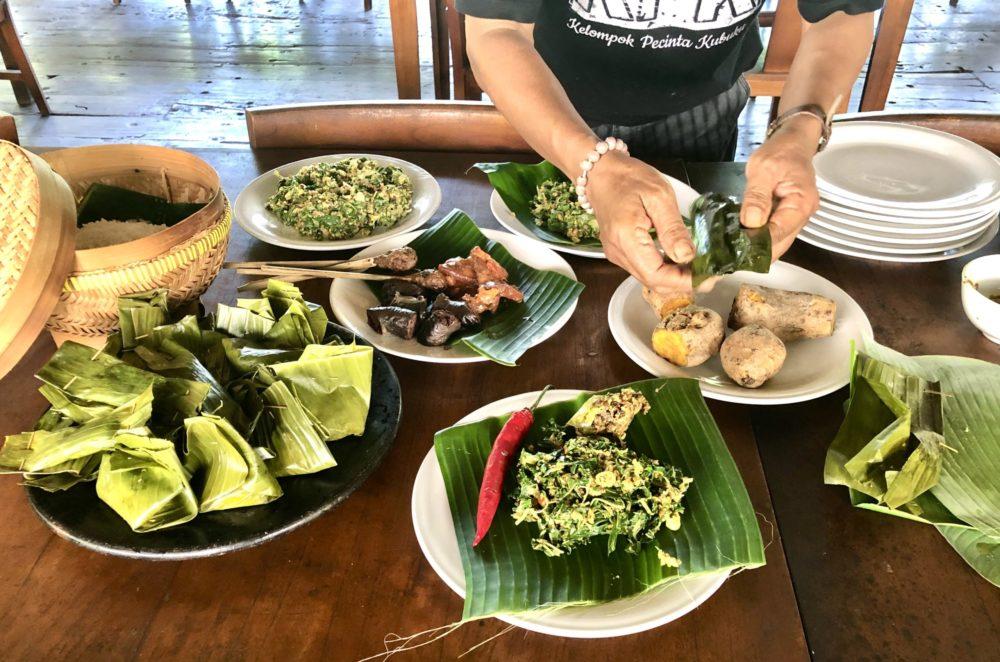
Ready to eat! Our sumptuous lunch was simple to make, and the grocery bill was almost 0 zero! For dessert we tasted local black rice pudding. What a pleasant and healthy way to endure a lockdown!

When you can travel, come join us for a Bali wild food class at Keramas Sacred River Village. Enjoy a variety of programs for visitors to experience the natural beauty of Bali.
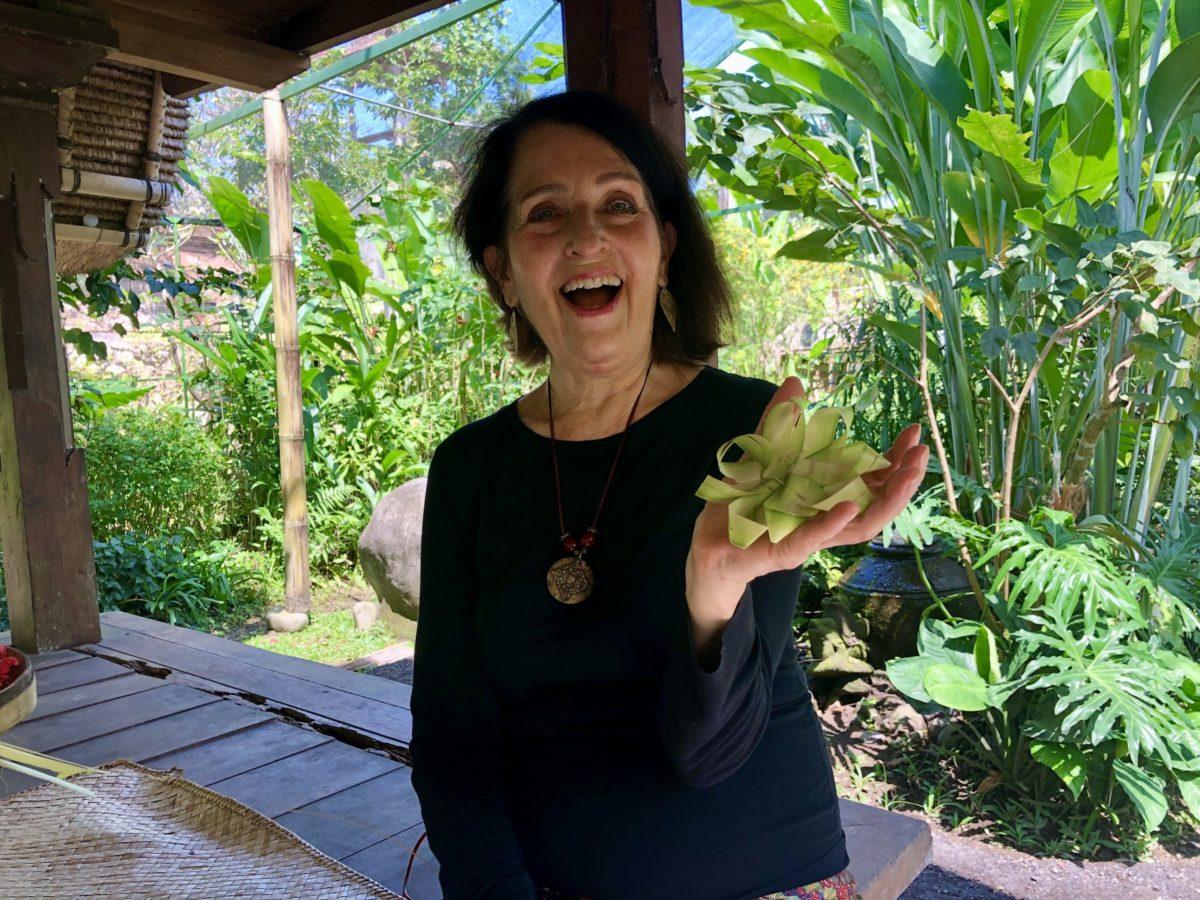
Thanks for joining me, All is well here in Bali. Lama D and I are safe. He is practicing his Dharma talks in English. I’m learning how to weave Canang Sari, the sacred offerings. Please stay safe in this exciting and ever-changing world. Sri Jana


